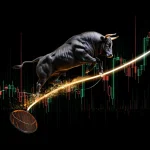The Psychology of Markets: Mass Psychology, Cognitive Biases, and Tactical Investing
Feb 3, 2025
Understanding Mass Psychology in Markets
Markets aren’t just driven by numbers—they are shaped by collective psychology. Mass psychology plays a critical role in stock market movements, often fueling bubbles, crashes, and trend reversals. Investors who understand these psychological patterns can anticipate major shifts rather than reacting to them.
Mass psychology explains why markets often overshoot fair valuations—either in euphoria (bubbles) or despair (crashes). A prime example is the dot-com bubble (1999-2000) when euphoric investors pushed internet stocks to absurd valuations, convinced they could never fall. On the flip side, the 2008 financial crisis saw mass panic drive asset prices far below intrinsic value, creating opportunities for those who kept a cool head.
Cognitive Biases That Influence Investors
To navigate market cycles effectively, investors must recognize cognitive biases that shape collective decision-making. Here are some of the most influential biases:
- The Lemming Effect: Investors blindly follow the crowd, assuming rational collective decisions. The crypto market’s frequent booms and busts showcase this effect, where retail investors buy assets simply because “everyone else is.”
- The Bandwagon Effect: Closely related to the Lemming Effect, this bias explains why investors rush into a stock simply because it’s popular. Consider Tesla’s meteoric rise—while its technology is groundbreaking, much of its valuation in 2020-2021 was driven by the media frenzy and social media hype rather than pure fundamentals.
- Loss Aversion: Investors fear losses more than they value gains. This can lead to holding onto losing positions far longer than logic dictates, hoping for a rebound that may never come. Those who refused to sell Enron stock as it collapsed in 2001 illustrate this trap.
- Confirmation Bias: Investors seek out information that supports their existing beliefs, ignoring contradictory evidence. A Bitcoin bull, for example, may only read bullish crypto news while ignoring warnings about regulation or adoption risks.
- The Tactical Investor’s Burro Theory: This concept suggests that most investors, like stubborn burros (donkeys), resist changing course even when clear warning signs emerge. In the 2008 housing crisis, many ignored red flags—rising foreclosures, unsustainable debt, and overheated real estate—until it was too late. Tactical investors, however, recognize early warning signs and pivot accordingly.
Using Technical Analysis to Identify Market Psychology
Understanding crowd behavior is one thing—profiting from it requires practical tools. Technical analysis (TA) offers insights into when mass psychology is shifting.
- Momentum Indicators: RSI (Relative Strength Index) and MACD (Moving Average Convergence Divergence) help identify when a stock is overbought (euphoric) or oversold (panic).
- Volume Analysis: A sudden surge in volume often indicates a change in sentiment. A dying rally with declining volume suggests the herd is losing enthusiasm.
- Support & Resistance: Key price levels represent psychological barriers. A stock failing to break a resistance level multiple times may indicate exhaustion and an impending sell-off.
- Contrarian Indicators: The Fear & Greed Index shows when investors are excessively bullish (a time to be cautious) or deeply fearful (potential buying opportunities).
A classic example is the March 2020 COVID-19 crash—as stocks plummeted, technical indicators like RSI signalled extreme fear. Those who followed mass psychology blindly sold in panic; those who read the signals saw an unprecedented buying opportunity.
Avoiding the Media Trap: Mass Psychology vs. Market Reality
Mainstream financial media often acts as an amplifier for crowd psychology, not an independent thinker. The media was overwhelmingly bullish on dot-com stocks in 1999 and on real estate in 2007—right before both collapsed. Today, financial news cycles pump narratives around AI, crypto, and green energy, often exaggerating their short-term prospects.
Instead of following headlines, savvy investors analyze market sentiment independently. When the media unanimously praises an asset, it’s often time to sell. When the media declares an asset “dead,” it’s often time to buy.
The Power of Independent Thinking in Investing
Successful investors avoid groupthink and herd mentality. Warren Buffett’s mantra—”Be fearful when others are greedy, and greedy when others are fearful”—is rooted in mass psychology. He buys undervalued assets when sentiment is at rock bottom and exits when the crowd is euphoric.
Practical Takeaways for Investors:
- Monitor investor sentiment—Identify market euphoria or despair using volume, RSI, and other TA tools.
- Recognize mass psychology biases—Avoid the bandwagon effect, lemming behavior, and loss aversion.
- Use technical analysis—Momentum indicators and volume patterns reveal when sentiment shifts.
- Ignore mainstream media hype—Rely on independent research instead of chasing trends.
- Be flexible—Like the Tactical Investor’s Burro Theory, recognize when it’s time to pivot.
Conclusion: The Real Edge Lies in Understanding the Crowd’s Madness
In investing, the truly successful don’t just follow the herd—they outsmart it. The market is nothing but a battlefield of human emotion, driven by irrational fears, euphoric highs, and devastating panics. Those who understand the psychology behind the masses are the ones who can weather the storms and capitalize on the chaos. You think you’ll get ahead by blindly following the news, parroting what the so-called “experts” are selling, or chasing after the latest media-driven trend? Think again. The real money is made by recognizing the opposite of what everyone else sees—by embracing the contrarian mindset that most people are too afraid even to consider.
Mass psychology dictates the market—not fundamentals, not technicals, but human behavior. If you’re not attuned to the mass mindset—the irrationality, the frenzy, the blind optimism or crushing pessimism—you’re simply a pawn in the game. The dot-com bubble, the 2008 housing crisis, and even the recent 2021 meme stock craze are textbook examples of collective madness. They show us that markets don’t move on pure logic—they move on emotion, and emotion is wildly unpredictable. It’s in these volatile moments that true investors make their move—buying when others panic and selling when the crowd is too greedy.
It’s time to stop pretending that sticking to the status quo will get you anywhere. Embrace the psychology of markets: understand the biases, know the psychological traps that mass hysteria sets for the unprepared, and position yourself before the crowd realizes it’s wrong. This is where cognitive biases like the lemming effect, the bandwagon bias, and loss aversion manifest as opportunities for those willing to take a calculated risk.
Stop believing the hype. Stop being part of the sheep herd. The next time the masses are buying, thinking they’re on the next big thing, ask yourself: “Am I just following the pack?” If the answer is yes, you’ve already lost. Be smarter. Use technical analysis to read the signs that the crowd is overstretched and primed for a crash. Use mass psychology to your advantage—invest in fear, sell into greed, and stay calm when chaos reigns.
At the end of the day, the market doesn’t owe you anything. The winners are those who can read between the lines, who can withstand the market’s psychological warfare and make decisions based on independence, data, and finesse. It’s not about how many stocks you own, or how often you trade—it’s about having the mindset to see what others are blind to.
So, what’s the takeaway? Outthink the crowd. Outlast the trend. And, above all, be prepared to break away when everyone else is too scared to do so. That’s where the real rewards lie. And while others are left licking their wounds, you’ll be counting your profits from having mastered the psychology of the masses.













